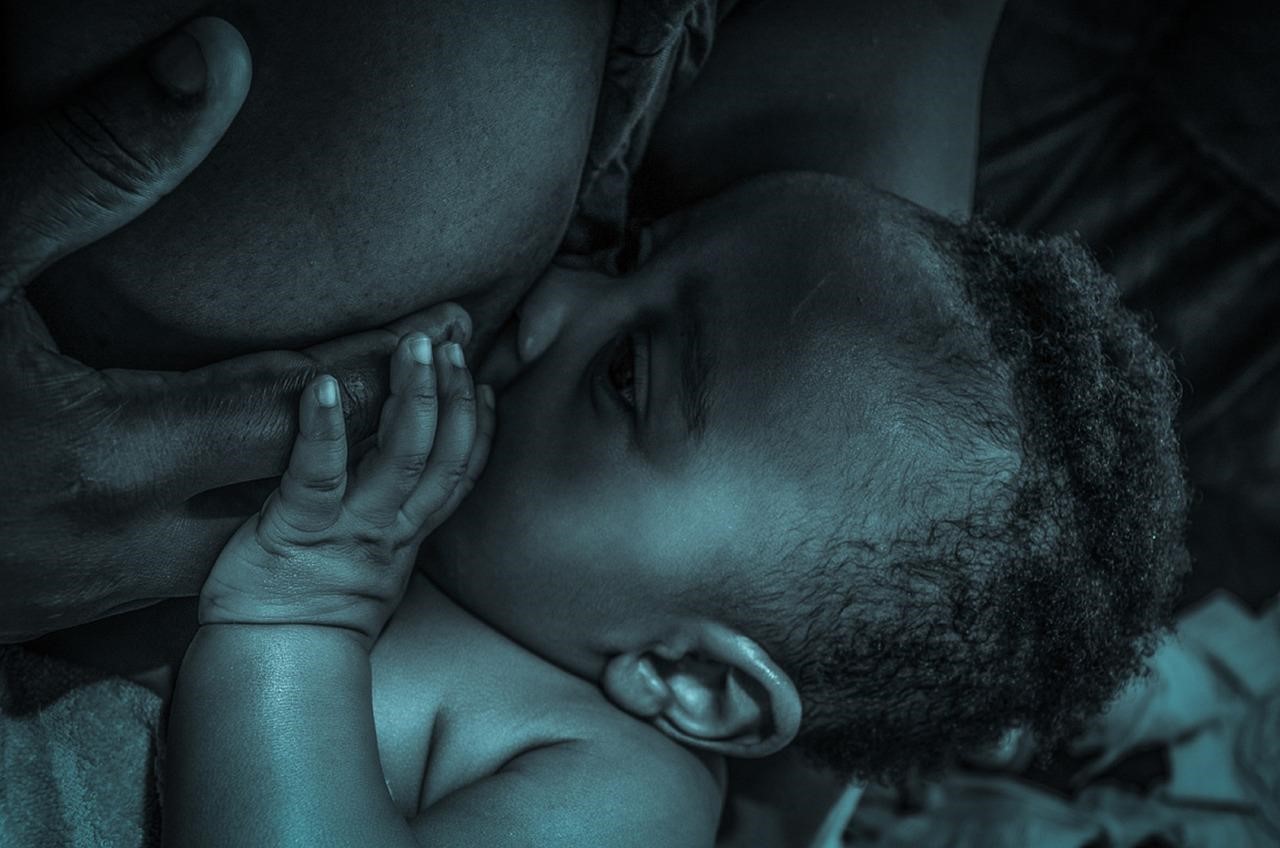By Adeola Alabi. DLHA Volunteer and Freelance Health Writer. With medical review and editorial support from the DLHA Team

A black mother and baby during breastfeeding
Highlights
Traditionally, breastfeeding has been an acceptable method of infant feeding in African culture before the advent of exclusive breastfeeding (EBF). Many pregnant mothers look forward to breastfeeding with pride.
Africans believe that breastfeeding facilitates a strong bond between a mother and her child. Some Africans have a strong belief in the power of breast milk as it truly prevents illnesses and boosts the baby's immune system.
The World Health Organisation (WHO) recommended EBF in the early 1990s with the aim to promote optimal growth and development, and protect children against several diseases including diarrhea, upper respiratory infections, and others.
EBF is a feeding practice widely promoted by the World Health Organisation and other national public health agencies worldwide. It recommends that infants be introduced to breastfeeding within one hour of birth, breastfed exclusively for the first six months of life with only breast milk, without the use of any other food or drinks except for oral rehydration solution, syrups of vitamins, minerals or medicines (as necessary) and continue to be breastfed up to 2 years of age and beyond. [1]
This article aims to raise awareness in African mothers and mothers-to-be about best practices in breast care and the need to adopt good breast hygiene practices during breastfeeding. This is so that they can hygienically feed their babies and get help early for any breast issues that may prevent adequate breastfeeding.
According to the US National Institute of Child Health and Human Development, “breastfeeding, also called nursing, is the process of feeding a mother's breast milk to her infant, either directly from the breast or by expressing (pumping out) the milk from the breast and bottle-feeding it to the infant”. [2]
Breast milk is natural and has no replacement. It provides an infant with calories and the nutrients, including fat, protein, carbohydrates, vitamins, minerals and antibodies that your baby needs for healthy growth and development free of illnesses.
Breastfeeding takes less effort when it comes to hygiene, of course you have to be clean but it isn’t as demanding as bottle-feeding which requires washing and sterilization of bottles and other items.
As a breast-feeding and lactating mother, washing of hands should be consistent. Wash your hands:
Breastfeeding is a huge part of becoming a mother. It’s beautiful, bonding and allows you to deliver essential nutrients to your growing baby.
Since breastfeeding is the best possible example of mother and child skin-to-skin contact, it’s crucial that you take proper hygienic care of your breasts to ensure the health of your baby.
Breast-feeding with a dirty breast exposes the baby to various diseases and infections. Poor hygiene during breast-feeding is more dangerous than not breastfeeding at all.
Here are some of the best practices in breast care during breastfeeding: [3]
.
Common Breast Problems during Breastfeeding
Breast problems to recognise during the breastfeeding period include:
Signs and Symptoms of Breastfeeding Related Disorders
Of Mastitis:
Of Breast engorgement:
Breast engorgement usually occurs during the early days of breastfeeding (days 3 - 5), but may occur later (i.e., days 9 - 10)
Of Hyperlactation:
Of Nipple cracks and abrasions:
Of Milk stasis:
Of Breast abscess:
A breast abscess during breastfeeding is a collection of pus that usually forms under the skin and is often a complication of mastitis. Signs and symptoms are similar to those described for mastitis.
Talk to your healthcare provider early if you notice any of the above signs and symptoms that may suggest you have a breast disorder during breastfeeding.
A high percentage of young mothers in Africa claim to be young “baddies" and conclude that breastfeeding makes their breasts lose shape and appear saggy. This is just a myth.
Breast milk provides essential nutrients, antibodies, and immune factors that promote optimal growth and development in infants. It is easily digestible and well-suited to the infant's nutritional needs.

A black mother breastfeeding her baby
Health benefits to mother and child: Breastfeeding has numerous health benefits for both infants and mothers. With support and guidance, many mothers can successfully breastfeed their infants, contributing to their overall health and well-being.
Disadvantages
Conclusion
Breast milk remains the only natural food and the most perfect for babies for the first two years. In the interest of your health and that of your baby’s, it is very important for you as a mother or mother-to-be to be aware and well informed about breast health during breastfeeding.
1. World Health Organization. Exclusive breastfeeding for optimal growth, development, and health of infants. [Internet. Last updated 2023 August 9]. Cited 2024 April 29. Available from here.
2. National Institute of Child Health and Human Development. Breastfeeding and Breast milk. [Internet. n.d.]. Cited 2024 April 29. Available from here.
3. Penn Medicine. Breastfeeding Care Instructions. [Internet, n.d.] Cited: 2024 April 29]. Available from here.
Breast health: What African Women Need to Know
Published: April 29, 2024
© 2024. Datelinehealth Africa Inc. All rights reserved.
Permission is given to copy, use and share content for non-commercial purposes without alteration or modification and subject to source attribution.
DATELINEHEALTH AFRICA INC., is a digital publisher for informational and educational purposes and does not offer personal medical care and advice. If you have a medical problem needing routine or emergency attention, call your doctor or local emergency services immediately, or visit the nearest emergency room or the nearest hospital. You should consult your professional healthcare provider before starting any nutrition, diet, exercise, fitness, medical or wellness program mentioned or referenced in the DatelinehealthAfrica website. Click here for more disclaimer notice.